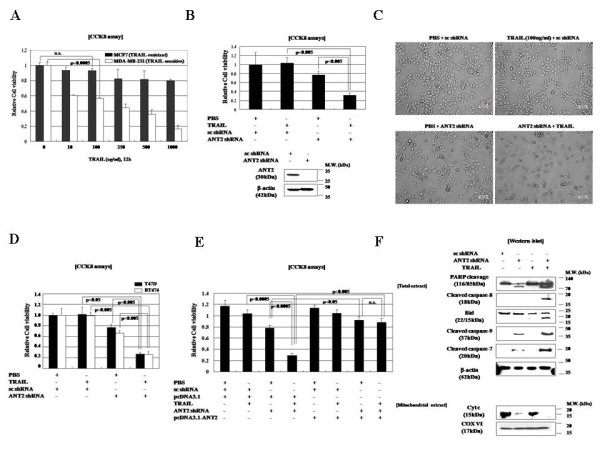Figure 1.

TRAIL cytotoxicity and expression of TRAIL receptors in the TRAIL-resistant breast cancer cell line MCF7 and the TRAIL-sensitive breast cancer cell line MDA-MB-231. (A) Cell viability assays were performed 12 h after treatment of MCF7 and MDA-MB-231 cells with recombinant human TRAIL. (B) MCF7 and MDA-MB-231 cells were transfected with 1 μg of scrambled or ANT2 shRNA. After 24 h, they were treated with recombinant human TRAIL (100 ng/ml). Cell viability assays were performed 12 h after TRAIL treatment. (C) Morphologic analysis of TRAIL-resistant MCF7 cells transfected with scrambled or ANT2 shRNA. After 24 h, the cells were treated with recombinant human TRAIL (100 ng/ml) for 12 h and then examined under a phase contrast microscope. (D) The TRAIL-resistant cell lines T47 D and BT474 were treated with shRNA and TRAIL and examined for cell viability as in (A). (E) MCF7 cells were transfected with scrambled or ANT2 shRNA. After 24 h, they were transfected with pcDNA3.1 or pcDNA-ANT2. After another 24 h, they were treated with recombinant human TRAIL (100 ng/ml) for 12 h and assayed for cell viability as in (B). (F) Immunoblot analysis of effect of ANT2 shRNA on TRAIL sensitivity. MCF7 cells were transfected with scrambled or ANT2 shRNA, treated with TRAIL for 12 h as in (A). Cell extracts were prepared, subjected to SDS-PAGE, and immunoblotted with antibodies as indicated.
